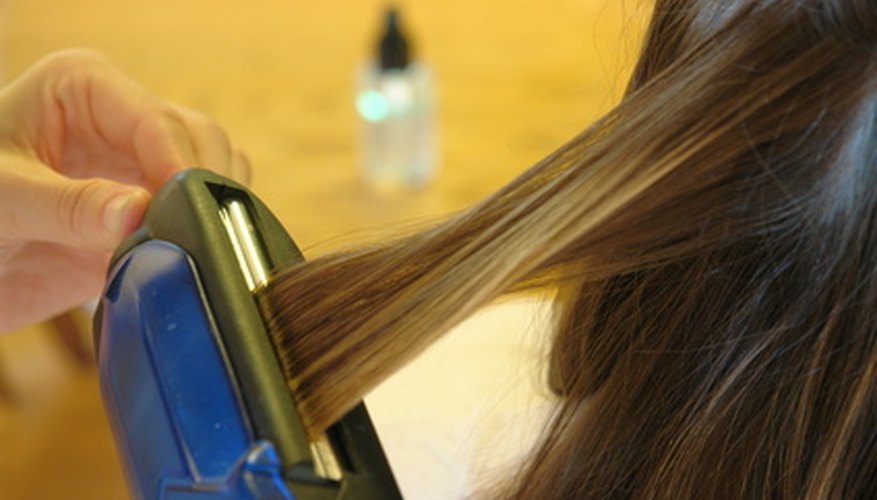Neutralising shampoo brings chemically-treated hair back to a healthy pH level. Neutralising shampoo users often use a colour indicator in conjunction with the shampoo to test the hair's pH. Different brands of neutralising shampoos will have different recipes; however, several shared ingredients are necessary for giving the product a neutralising effect.
Deionised Water
Water dilutes other shampoo ingredients and also serves as a filler. Neutralising shampoos use deionised water, which is purified by the removal of mineral ions. It is gentler on the hair and helps prevent mineral build-up.
- Neutralising shampoo brings chemically-treated hair back to a healthy pH level.
- Neutralising shampoos use deionised water, which is purified by the removal of mineral ions.
Acidifiers
Acids in neutralising shampoos restore acid levels, reduce scalp dryness, assist in the leaching of chemicals and promote hair re-growth. Types of acids used include lactic acid and citric acid. Lactic acid comes from milk, and citric acid comes from citrus fruit.
Humectants
Humectants work to bond together hydrogen and molecules of water and have a moisturising effect on both the hair and scalp. Humectants also have neutralising effects. Types of humectants used in neutralising shampoos include glycerine, propylene glycol, laurate and disostearate.
- Humectants work to bond together hydrogen and molecules of water and have a moisturising effect on both the hair and scalp.
Surfactants
Surfactants help emulsify the shampoo, increase solubility of residue left in the hair and make the shampoo more spreadable. Types of surfactants used include cocamidopropyl betaine, lauramine oxide and cocamidopropyl betaine.
Sodium Hydroxide
Neutralising shampoos commonly use sodium hydroxide as a neutraliser. It works by separating positively-charged sodium atoms from negatively-charged oxygen and hydrogen atoms. As it is a strong alkaline compound that is also caustic, shampoos use sodium hydroxide only in trace amounts.
